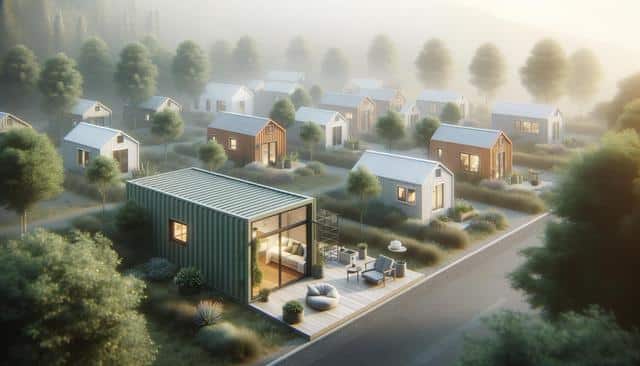Exploring Affordable Housing Alternatives for Every Lifestyle
Looking for affordable housing options? Explore various alternatives that suit your budget, from renting to buying. Whether you’re seeking smaller spaces or flexible plans, there’s an option for everyone to make housing more accessible.

Co-Living Spaces: Community Living with Lower Costs
Co-living has emerged as a practical and social alternative to traditional housing, especially in urban areas where rent prices are high. These shared accommodations typically include private bedrooms and shared common areas such as kitchens and living rooms. By splitting rent and utility expenses among multiple residents, co-living can significantly reduce monthly housing costs. This model is particularly popular among young professionals, digital nomads, and students who value community and convenience.
Co-living spaces often come with additional perks:
- Furnished units with basic amenities included
- Flexible lease terms
- Built-in community and networking opportunities
While co-living may not suit everyone’s preference for privacy, it offers a dynamic and affordable living arrangement that balances cost with social interaction.
Tiny Homes: Downsizing for Financial Freedom
Tiny homes have gained popularity among those looking to reduce their living expenses and environmental footprint. These compact residences, usually under 400 square feet, are designed to maximize space efficiency without sacrificing comfort. Many people build or buy tiny homes as a way to own property without the burden of a large mortgage.
The benefits of tiny home living include:
- Lower upfront costs compared to traditional houses
- Minimal utility bills and maintenance expenses
- Increased mobility with options like tiny homes on wheels
Tiny homes are ideal for individuals or couples seeking a simpler lifestyle. However, zoning laws and land use regulations can vary, so it’s important to research local policies before taking the plunge.
Modular and Prefabricated Homes: Efficient and Budget-Friendly
Modular and prefabricated homes are built off-site and assembled on location, which reduces labor and construction time. These homes are often more affordable than traditional builds and can be customized to meet specific needs. Advances in manufacturing have improved both the design and durability of modular housing, making it a viable long-term solution for cost-conscious buyers.
Key advantages include:
- Shorter construction timelines
- Predictable pricing and fewer delays
- Energy-efficient designs
Although the initial cost may still vary depending on design choices and location, modular homes offer a reliable and scalable alternative for those seeking affordability and modern living.
Shared Ownership and Housing Cooperatives
Shared ownership and housing cooperatives provide alternative paths to homeownership for those who may not qualify for traditional mortgages. In a shared ownership model, residents buy a portion of the property and pay rent on the remaining share, with the option to purchase additional shares over time. Housing cooperatives, on the other hand, involve collective ownership where members buy shares in a corporation that owns the property.
These models offer several benefits:
- Lower entry costs for homeownership
- Shared responsibilities and decision-making
- Stronger community ties and long-term stability
While these arrangements may involve more complex legal and financial structures, they provide valuable alternatives for individuals and families looking to enter the housing market without overextending financially.
Accessory Dwelling Units (ADUs): Versatility in Your Backyard
Accessory Dwelling Units, or ADUs, are small, self-contained structures built on the same lot as a primary residence. Often referred to as granny flats or backyard cottages, ADUs can provide independent living spaces for extended family members or serve as rental units to generate additional income.
Why consider ADUs?
- Cost-effective way to increase housing supply
- Flexible use: guest house, rental, or home office
- Potential to add value to existing property
ADUs are particularly appealing in areas with high housing demand and limited space for new development. However, building an ADU requires knowledge of local zoning codes and permits, which can vary significantly between municipalities.
Conclusion: Finding the Right Fit for Your Budget and Lifestyle
Affordable housing alternatives come in many forms, each with its own set of benefits and trade-offs. Whether you’re downsizing to a tiny home, joining a co-living community, or exploring shared ownership, there are practical options available to fit diverse needs and budgets. By evaluating your financial goals, lifestyle preferences, and local housing regulations, you can identify a solution that makes home more accessible and sustainable. With thoughtful planning, affordable living doesn’t have to mean compromising on quality or comfort.